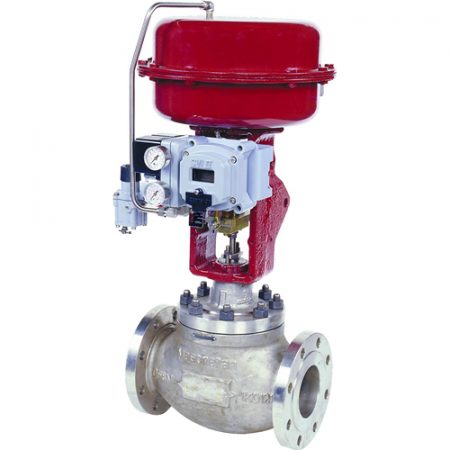Maximize Energy Financial Savings and Convenience With Advanced Building Automation Controls
In the world of modern design and center administration, the combination of sophisticated structure automation manages stands as a critical advancement. By taking advantage of the power of automation, structures can adapt, respond, and evolve in ways that were once inconceivable.
Energy Performance Perks
Power effectiveness benefits can dramatically reduce power intake and operational prices in structures. By applying energy-efficient methods and modern technologies, structure owners and operators can attain substantial savings while additionally adding to ecological sustainability. One of the key advantages of improving energy performance in buildings is the reduction of energy costs. Energy-efficient systems, such as advanced structure automation controls, can optimize the use of sources like cooling, lights, and home heating, causing lower power expenditures gradually.
In addition, enhanced energy performance can prolong the life-span of structure tools and systems. By running more efficiently, a/c systems, lighting fixture, and various other building elements experience much less wear and tear, leading to decreased maintenance and replacement expenses. Furthermore, energy-efficient buildings commonly regulate higher building worths and rental rates, supplying long-term financial benefits to owners.
In addition, power effectiveness can enhance resident convenience and productivity. Correctly regulated indoor atmospheres with optimal lights and thermal problems create a more favorable and positive office, causing boosted employee satisfaction and performance. Generally, the energy efficiency advantages linked with advanced structure automation controls are multifaceted, including price financial savings, ecological stewardship, and resident health.
Improved Convenience Control
Enhancing convenience control in building atmospheres needs an advanced combination of innovative automation systems for optimum passenger wellness. By making use of innovative building automation controls, facilities can tailor the interior setting to meet the details needs and preferences of owners. These systems make it possible for specific regulation of lighting, temperature, and ventilation, creating a productive and comfy atmosphere. Resident fulfillment and productivity are closely linked to thermal comfort, making it important to have systems in position that can adapt to transforming conditions in real-time.
Boosted comfort control goes beyond fundamental temperature level changes. It consists of features such as individualized setups, tenancy sensors, and natural light usage to create a responsive and dynamic setting. By integrating these advanced controls, structures can not only improve convenience however additionally boost power efficiency by maximizing system procedures based on real tenancy and usage patterns. Eventually, focusing on occupant convenience with sophisticated automation systems results in a more enjoyable and healthier indoor environment.
Functional Efficiency Improvements

In addition, the execution of real-time surveillance and analytics devices enables building drivers to recognize energy ineffectiveness and operational abnormalities immediately. By continually monitoring power use patterns and system performance metrics, adjustments can be made in real-time to optimize energy usage and make sure peak my response functional performance. control valves. Additionally, incorporating need feedback techniques into building automation controls can even more enhance functional effectiveness by dynamically adjusting energy usage based on grid conditions and prices signals
Indoor Climate Optimization
Reliable interior climate optimization is an essential aspect of structure automation controls, guaranteeing passengers' comfort and wellness while making best use of power savings. By utilizing advanced sensors and controls, building automation systems can constantly adjust and keep track of temperature, moisture levels, air quality, and air flow to create an ideal indoor atmosphere. Preserving comfy and consistent conditions not only enhances occupant fulfillment yet also enhances performance and total health.
Indoor climate optimization additionally plays a crucial role in energy effectiveness. By fine-tuning air conditioning, heating, and ventilation systems based on real-time information and occupancy patterns, developing automation controls can considerably decrease energy intake - control valves. Carrying out techniques such as demand-controlled air flow and thermal zoning can help reduce energy waste while making certain that each location of the structure gets the necessary conditioning.

Sustainable Setting Development
Building automation regulates not just maximize interior environment conditions for power effectiveness and occupant convenience but likewise lay the structure for developing a sustainable atmosphere with critical monitoring of sources and systems. By integrating advanced structure automation innovations, such as sensing units, actuators, and intelligent software program, facilities can check and change power usage in real-time to minimize waste and decrease their carbon footprint. These systems allow anticipating maintenance, identifying possible concerns before they escalate and optimizing equipment performance to improve long life and performance.
Furthermore, sustainable atmosphere creation extends beyond power administration to include water preservation, waste decrease, and interior air high quality improvement. Structure automation controls can regulate water use, identify leakages, and make certain correct waste disposal practices, contributing to overall sustainability initiatives. Additionally, by regulating and keeping an eye on air flow and filtering systems, these technologies boost resident health and wellness and performance while lowering energy consumption connected with a/c procedures.
Verdict
To conclude, progressed structure automation controls offer significant benefits in terms of power cost savings, convenience control, operational efficiency, interior environment optimization, and producing a sustainable atmosphere. By implementing these controls, structures can accomplish optimum performance while minimizing energy consumption and enhancing occupant comfort. It is evident that using innovative automation modern technology is critical in enhancing structure performance and creating an extra lasting future.
Energy efficiency benefits can substantially decrease energy intake and functional costs in structures. Overall, the power performance advantages associated with advanced structure automation controls are multifaceted, incorporating price financial savings, environmental stewardship, and resident health.
In addition, including need feedback methods right into structure automation controls can even more boost operational performance by dynamically changing energy use based on grid conditions and pricing signals.
Structure automation regulates not just optimize indoor environment problems for power performance and passenger convenience however also lay the structure for developing a sustainable setting with tactical administration of systems and resources.In final thought, advanced structure automation controls deal considerable advantages in terms of power financial savings, convenience control, functional performance, interior climate Check This Out optimization, and developing a sustainable atmosphere.